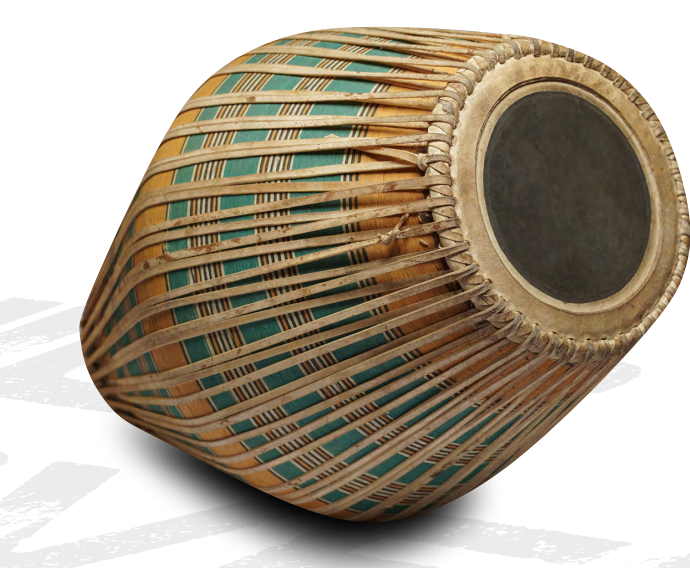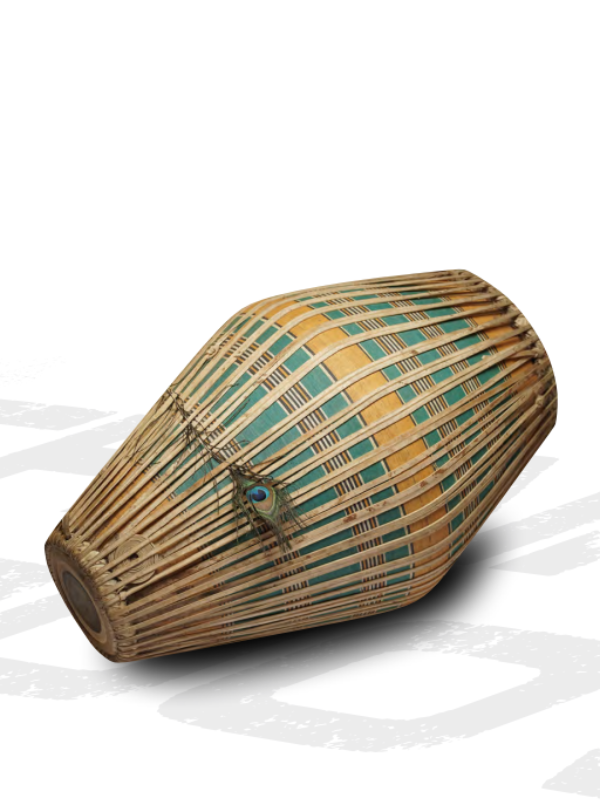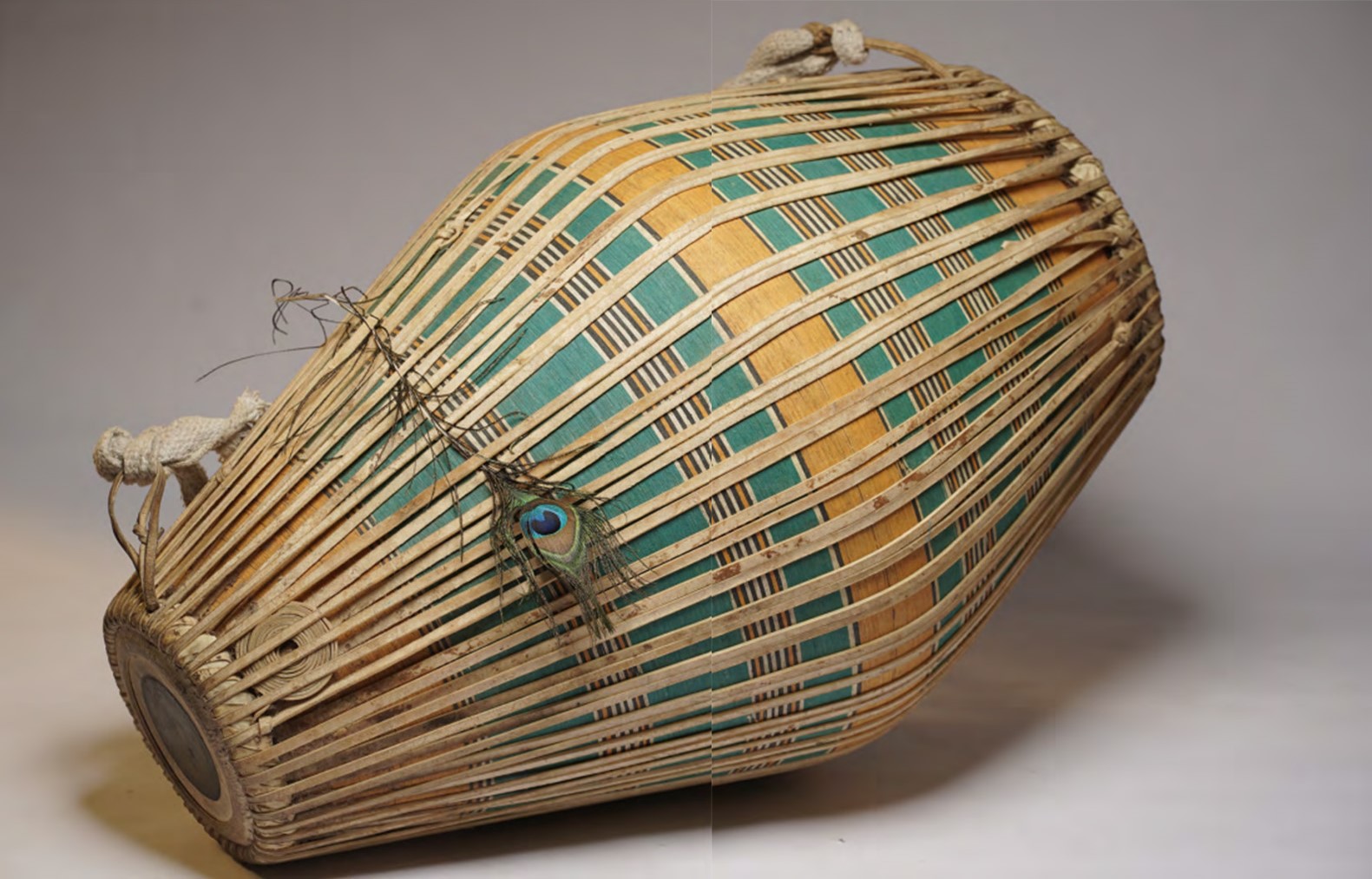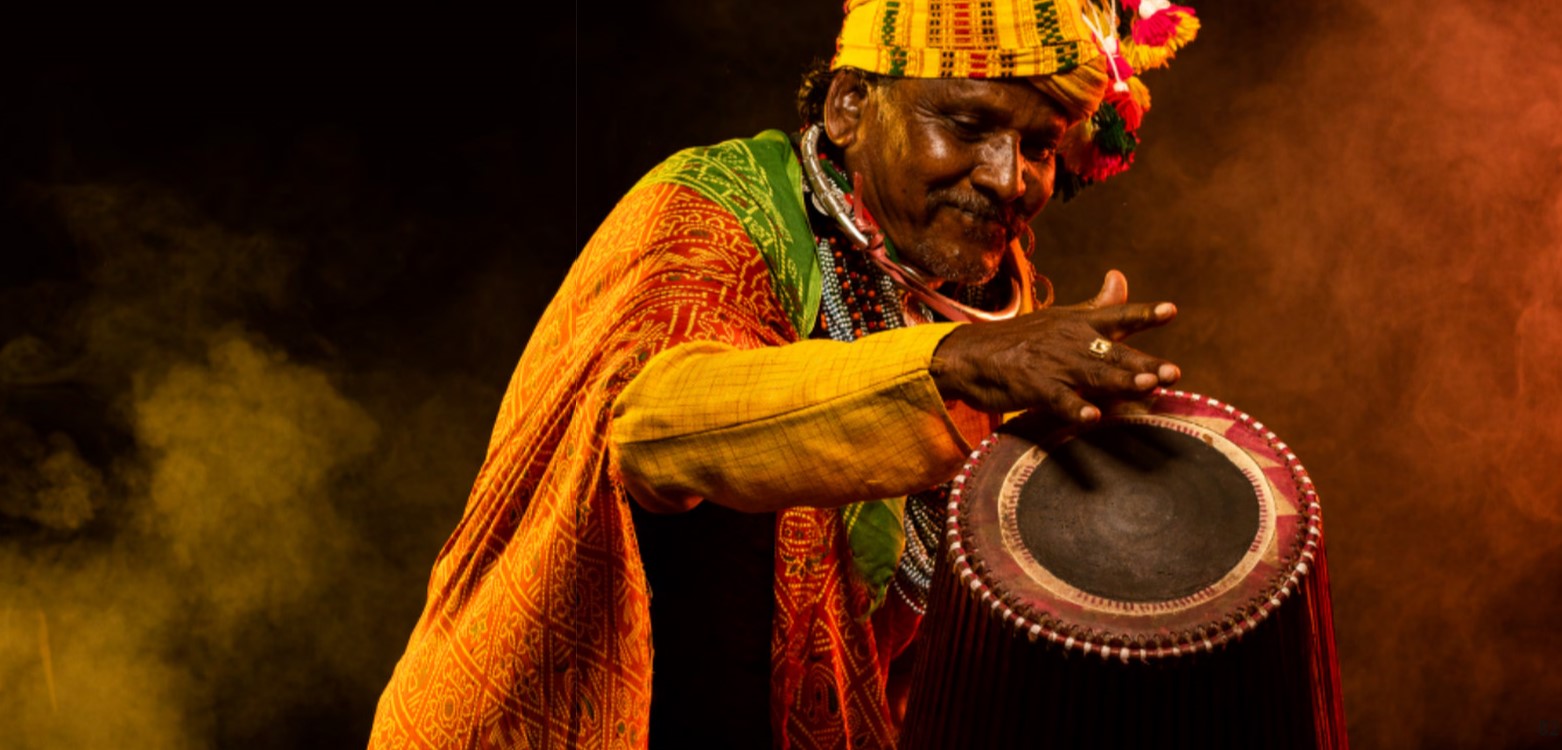
Themes
tribal music and musical instruments
Kirtan Khola, chhattisgarh

Chhattisgarh's Rajgond tribe has its own traditional musical instrument, which goes by the name of Kirtan Khola. It is a kind of drum which is played during their cultural and communal religious performances and ceremonies, especially when the members gather at any festival or perform any spiritual ceremony. This drum acts as an enhancer to the basic rhythmic quality of their folk songs and dances in order to keep them in touch with their ancient customs associated with nature-centric spirituality.
The Rajgond tribe is a celebrated community in Chhattisgarh. It is part of the much larger Gond tribe of central India. They are known as a rich heritage in culture and are known for their agricultural livelihoods and different forms of art, such as Gond paintings. Historically, they were known as warriors of the Gondwana kingdom. Their beliefs are animistic; they have festivals such as the Keslapur Jatara and Karma, celebrating nature and ancestors through music and dance. They maintain a traditional village council and leadership structures with social organization.


The Kirtan Khola is a conical-shaped drum mainly made from clay and leather, having two opposite ends which differ in size with one called Taiyaan on the smaller end, which produces sharper, high-pitched sounds, while the larger end is called Dhaiyaan and produces deeper bass tones. The typical rounder side of the bigger end creates its distinctive contrast of sound as well. It is largely used for folk music and rites and marveled by the Rajgond tribe of Chhattisgarh.
Its fundamental form is known as a shell and is composed of clay. The local pottery community creates the shell, which the Ghasiya group, who produce Kirtan, purchases from them. They then cover both of its ends with an ox's hide. It is covered in laasa (gum) (Sarai). On both of its sections, a black paste known as Kharvan—powder made from a unique stone found in the river is applied. This gives the instrument its distinctive sound and resonance. After this, the drum is finely tuned by adjusting the tightness of the hide, ensuring it produces the desired rhythmic tones.


